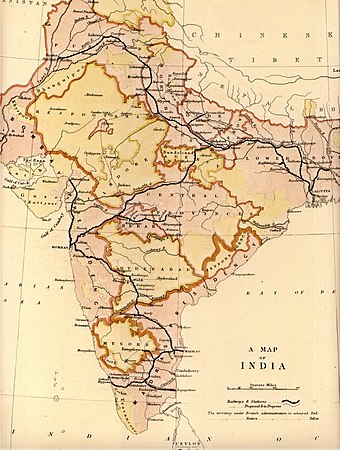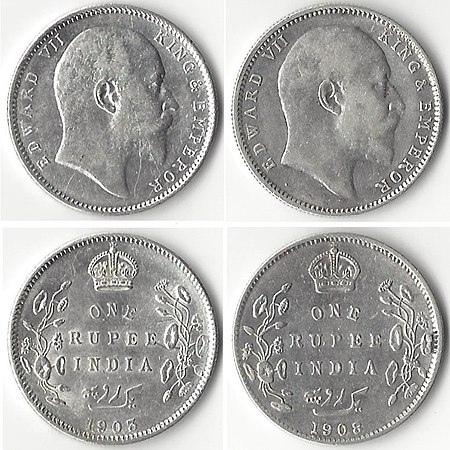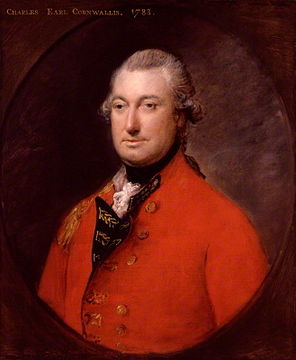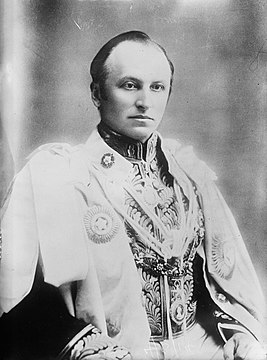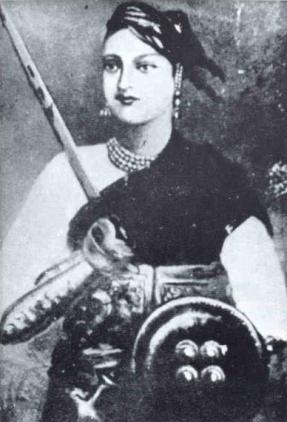British India
Jump to navigation
Jump to search
বাংলা: ব্রিটিশ ভারত বলতে সপ্তদশ শতক থেকে ১৫ আগস্ট ১৯৪৭ পর্যন্ত ভারতীয় উপমহাদেশে ব্রিটিশ শাসনকে বোঝায়। ১৬৯০ থেকে ১৯১১ পর্যন্ত এর রাজধানী কলকাতা এবং ১৯১১ থেকে ১৯৪৭ পর্যন্ত নতুন দিল্লি ছিল। ব্রিটিশ উপনিবেশটি বর্তমানে পাকিস্তান, বাংলাদেশ ও ভারত জুড়ে বিস্তৃত।
English: The British India refers to the British colonial rule of the Indian subcontinent from the 17th century to 15 August 1947. Its capital was Calcutta from 1690 to 1911 and New Delhi from 1911 to 1947. The British colony corresponds to present-day Bangladesh, India and Pakistan.
British colonial rule on the Indian subcontinent | |||||
| Upload media | |||||
| Instance of |
| ||||
|---|---|---|---|---|---|
| Capital | |||||
| Basic form of government | |||||
| Official language | |||||
| Currency | |||||
| Has part(s) | |||||
| Inception |
| ||||
| Dissolved, abolished or demolished date |
| ||||
| Different from | |||||
| Said to be the same as | British Raj | ||||
| |||||
Maps
[edit]-
1909 map of India, showing British India in two shades of pink and the princely states in yellow.
-
The British Indian Empire and surrounding countries in 1909
-
1909 Prevailing Religions, map of British India showing the majority religions based on the census of 1901
-
Railway map of India in 1871
-
Railway map of India in 1909
Money
[edit]-
One mohur (1862) depicting Queen Victoria.
-
Two silver one rupee coins used in India during the British Raj, showing Victoria, Queen, 1862 (left) and Victoria, Empress, 1886 (right)
-
Silver one rupee coins showing Edward VII, King-Emperor, 1903 (left) and 1908 (right)
-
Silver one rupee coins used in India during the British Raj, showing George V, King-Emperor, 1913 (left) and 1919 (right)
-
One rupee coins showing George VI, King-Emperor, 1940 (left) and just before India's independence in 1947 (right)
Governors General of the Presidency of Fort William, Viceroys and Governors-General of India, and Governors-General of the Dominion of India
[edit]in chronological order
Governors General of the Presidency of Fort William (1773–1833)
[edit]-
Warren Hastings
-
Sir John Macpherson, 1st Baronet
-
Charles Cornwallis, 1st Marquess Cornwallis / The Earl Cornwallis
-
John Shore, 1st Baron Teignmouth
-
Lieutenant general Sir Alured Clarke
-
Richard Wellesley, 1st Marquess Wellesley / The Marquess Wellesley
-
Charles Cornwallis, 1st Marquess Cornwallis / The Marquess Cornwallis
-
Sir George Barlow, 1st Baronet
-
Gilbert Elliot-Murray-Kynynmound, 1st Earl of Minto / The Lord Minto
-
Francis Rawdon-Hastings / The Marquess of Hastings
-
John Adam (acting)
-
William Amherst, 1st Earl Amherst / The Earl Amherst
-
William Butterworth Bayley (acting)
Governors-General of India (1834–1858)
[edit]-
Lord William Bentinck
-
Sir Charles Metcalfe, 1st Baron Metcalf (acting)
-
George Eden, 1st Earl of Auckland / The Earl of Auckland
-
Edward Law, 1st Earl of Ellenborough / The Lord Ellenborough
-
William Wilberforce Bird (acting)
-
Henry Hardinge, 1st Viscount Hardinge
-
James Broun-Ramsay, 1st Marquess of Dalhousie / The Earl of Dalhousie
-
Charles Canning, 1st Earl Canning / The Viscount Canning
Viceroys and Governors-General of India (1858–1947)
[edit]-
Charles Canning, 1st Earl Canning / The Viscount Canning
-
James Bruce, 8th Earl of Elgin / The Earl of Elgin
-
Robert Napier, 1st Baron Napier of Magdala (acting)
-
Sir William Thomas Denison (acting)
-
John Lawrence, 1st Baron Lawrence
-
Richard Bourke, 6th Earl of Mayo / The Earl of Mayo
-
Sir John Strachey (acting)
-
Francis Napier, 10th Lord Napier / The Lord Napier (acting)
-
Thomas Baring, 1st Earl of Northbrook / The Lord Northbrook
-
Robert Bulwer-Lytton, 1st Earl of Lytton / The Lord Lytton
-
George Robinson, 1st Marquess of Ripon / The Marquess of Ripon
-
Frederick Hamilton-Temple-Blackwood, 1st Marquess of Dufferin and Ava / The Earl of Dufferin
-
Henry Petty-Fitzmaurice, 5th Marquess of Lansdowne / The Marquess of Lansdowne
-
Victor Bruce, 9th Earl of Elgin / The Earl of Elgin
-
George Curzon, 1st Marquess Curzon of Kedleston / The Lord Curzon of Kedleston
-
Gilbert Elliot-Murray-Kynynmound, 4th Earl of Minto / The Earl of Minto
-
Charles Hardinge, 1st Baron Hardinge of Penshurst / The Lord Hardinge of Penshurst
-
Frederic Thesiger, 1st Viscount Chelmsford / The Lord Chelmsford
-
Rufus Isaacs, 1st Marquess of Reading / The Earl of Reading
-
E. F. L. Wood, 1st Earl of Halifax / The Lord Irwin
-
Freeman Freeman-Thomas, 1st Marquess of Willingdon / The Earl of Willingdon
-
Victor Alexander John Hope, 2nd Marquess of Linlithgow
-
Archibald Wavell, 1st Earl Wavell / The Viscount Wavell
-
Louis Mountbatten, 1st Earl Mountbatten of Burma / The Viscount Mountbatten of Burma
Governors-General of the Dominion of India, 1947–1950
[edit]-
Louis Mountbatten, 1st Earl Mountbatten of Burma / The Viscount Mountbatten of Burma
-
Chakravarti Rajagopalachari also known as Mootharignar Rajaji
Misc.
[edit]-
Lakshmibai, the Rani of Jhansi, one of the principal leaders of the Indian Rebellion of 1857, who earlier had lost her kingdom as a result of Lord Dalhousie's Doctrine of Lapse.
-
Sir Syed Ahmed Khan founder of the Muhammadan Anglo-Oriental College, later the Aligarh Muslim University, wrote one of the early critiques, The Causes of the Indian Mutiny.
-
An 1887 portrait of Queen Victoria as Empress of India, 30 years after the war
-
Viceroy Lord Canning meets Maharaja Ranbir Singh, 9 March 1860.
-
1866 stamp of British India, Queen Victoria, 4 Indian anna
-
Hakim Ajmal Khan, a founder of the Muslim League, became the president of the Indian National Congress in 1921.
-
Lord Minto, the Conservative viceroy met with the Muslim delegation in June 1906. The Minto-Morley Reforms of 1909 called for separate Muslim electorates.
-
British and native soldiers in the 1890s
-
Great Famine of 1876–1878 in south and southwestern IndiaMain category: Indian famine of 1876–78
-
Mahatma Gandhi with Annie Besant in Madras, September, 1921. In Madurai, Gandhi had adopted the loin-cloth for the first time as a mark of his identification with India's poor.Main category: Mohandas K. GandhiMain category: Annie Besant
-
Chakravarti Rajagopalachari proclaims the Republic of India





